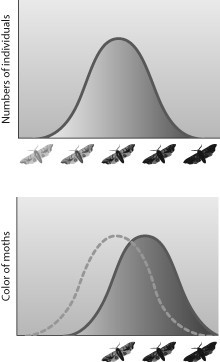When a scientist examined museum specimens of a particular moth species, she noticed that the variation in color was distributed as shown in the first graph. She was surprised because her data from current collections indicated the distribution of colors
shown in the second graph. Which hypothesis about the cause of this shift in the range of genetic variation is the most likely to be supported by examination of the distribution of colors in a collection assembled at a time between that of the collection of the museum specimens and her current specimens?
A) Darker moths tend to lay more eggs than light moths.
B) Birds prefer to eat lighter moths rather than darker moths.
C) The bark of the tree on which moths landed became darker over time.
D) Darker moths were more likely to survive and have offspring over time.
Answer: D
You might also like to view...
Which of the following effects can occur because of the high surface tension of water?
A) Lakes cannot freeze solid in winter, despite low temperatures. B) A raft spider can walk across the surface of a small pond. C) Organisms can resist temperature changes, although they give off heat due to chemical reactions. D) Sweat can evaporate from the skin, helping to keep people from overheating. E) Water can flow upward from roots to the leaves in plants.
In eastern Oregon, the mycelium of a single individual Armillaria ostoyae covers an area of 8.9 km2. Which fungal phylum does it belong to?
a. Chytridiomycota b. Glomeromycota c. Ascomycota d. Basidiomycota
Modern humans are
A. hominoids. B. primates. C. anthropoids. D. hominids. E. All of the choices apply to humans.
If you see moss near the base of a tree in your yard, the green leafy moss plants are
A) gametophytes. B) gametes. C) sporophytes. D) zygotes. E) spores.